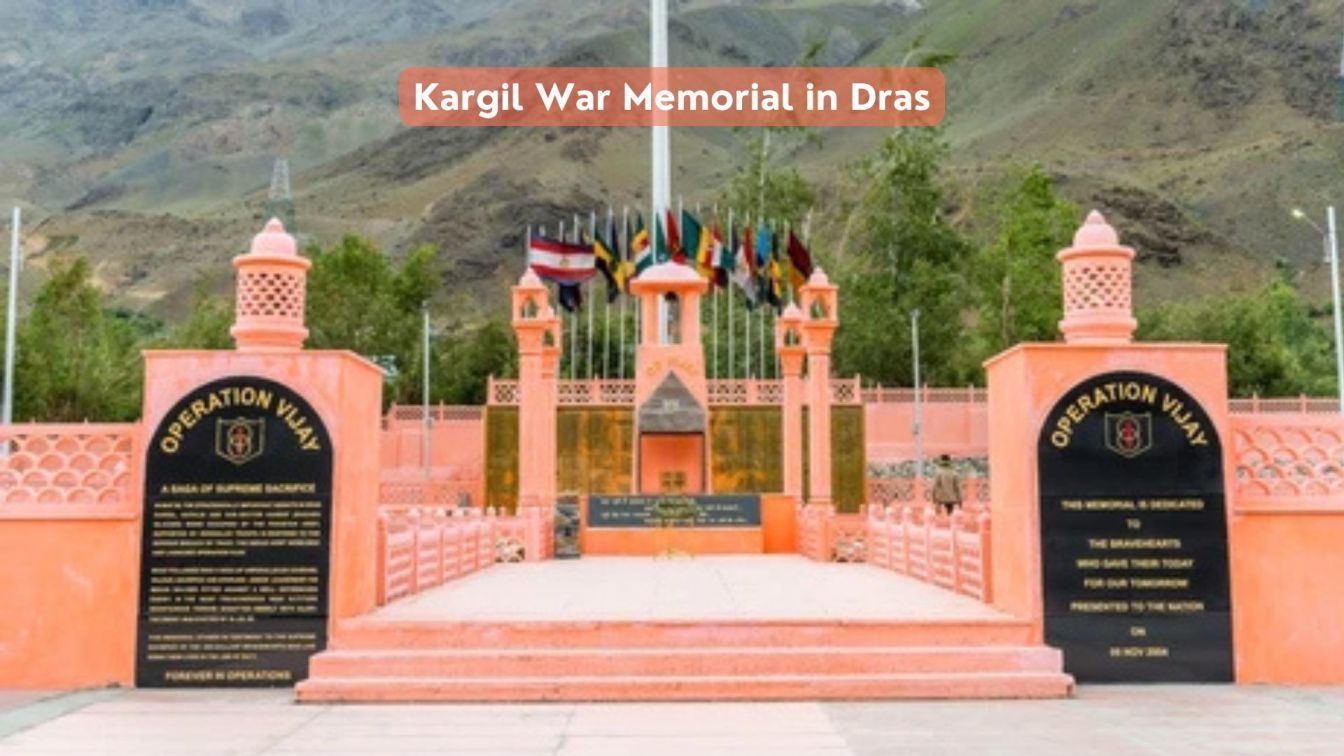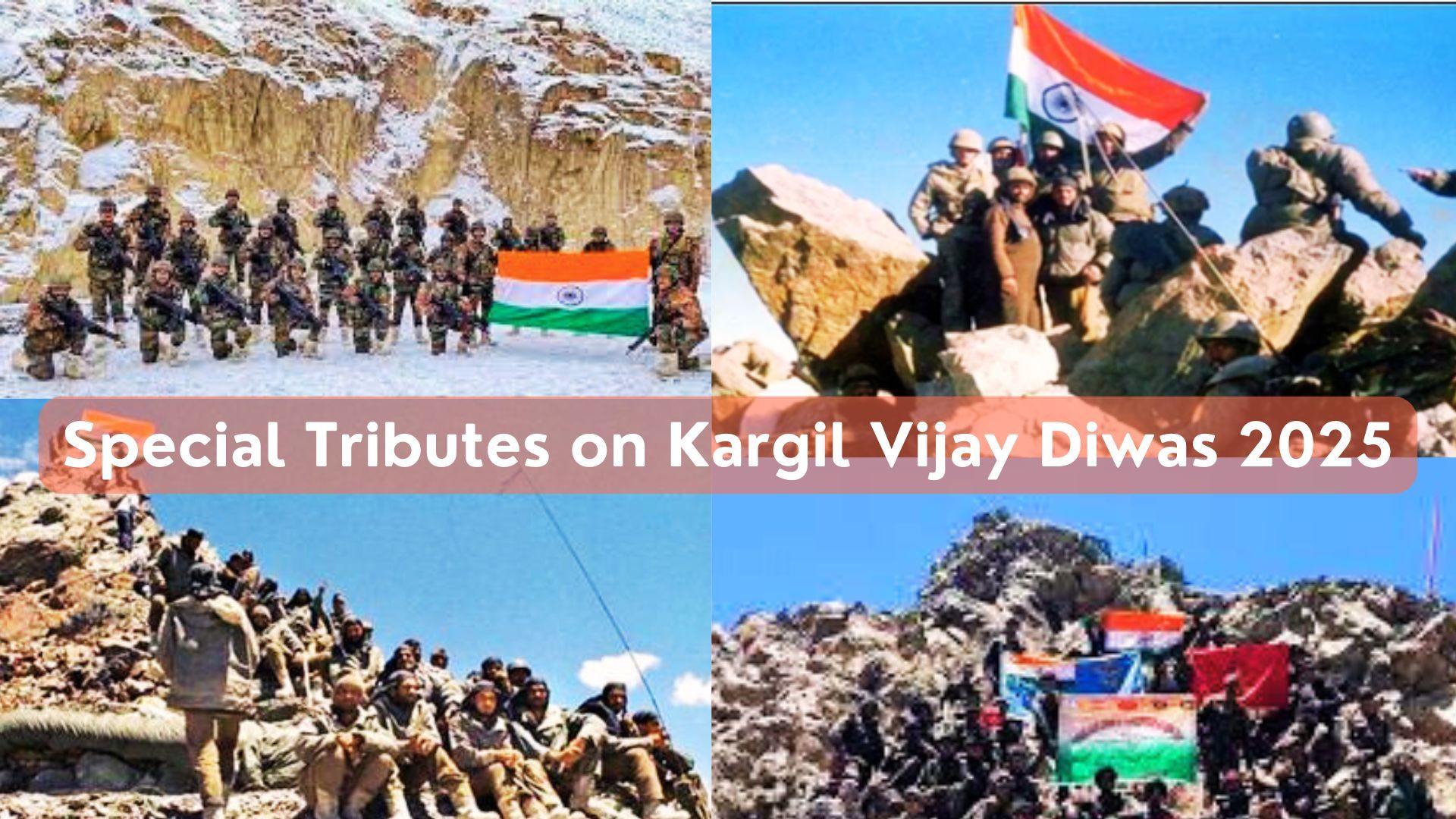Kargil Vijay Diwas 2025: Honouring 26 Years of Valour and Victory
Jul, 2025
•5 min read
Why in News?
This year, India observes the 26th anniversary of Kargil Vijay Diwas on 26th July 2025. The day commemorates the valiant soldiers who laid down their lives during the Kargil War, honouring their unmatched courage and sacrifice.
Why Cover This Topic for UPSC?
- Relevant for UPSC Prelims Current Affairs.
- Relevant for Mains GS Paper I (Modern History) and GS Paper III (Security issues).
- Important for Essay and Interview – patriotism, national security.
- Highlights India’s defence strategy and military history.
- Can be linked to India-Pakistan relations in IR (GS Paper II).
Kargil Vijay Diwas: 26 Years of Brave Victory
Every year on 26th July, India observes Kargil Vijay Diwas to pay tribute to the brave soldiers who led India to victory in the Kargil War of 1999. In 2025, we commemorate 26 years of this historic moment that continues to inspire generations with its stories of courage and sacrifice.
The war began in May 1999, when Pakistani intruders crossed the Line of Control (LoC) and captured key Indian positions in the Kargil sector of Ladakh. They intended to cut off National Highway 1A, a crucial route connecting Srinagar to Leh.
Historical Background of the Kargil Conflict
The Kargil War of 1999 didn’t erupt overnight. It was the result of decades of tension and mistrust between India and Pakistan.
- The two countries have fought several wars since independence, the most significant being the 1971 war, which led to the creation of Bangladesh.
- In the years that followed, border tensions remained high, especially in the Siachen Glacier region, where both sides tried to control strategic mountain ridges.
- In 1998, both India (Operation Shakti) and Pakistan conducted nuclear tests, heightening global concerns and further straining bilateral relations.
In a surprising diplomatic move, both nations signed the Lahore Declaration in February 1999, committing to a peaceful and bilateral resolution of the Kashmir conflict. However, behind the scenes, a different plan was taking shape.
- During the winter of 1998–1999, Pakistani forces, disguised as militants, secretly crossed the Line of Control (LoC) and occupied fortified positions in the Dras and Batalik sectors of Kargil, Ladakh.
- These positions overlooked the crucial National Highway 1A (NH 1A)—a lifeline connecting Srinagar to Leh.
- Initially believed to be an infiltration by militants or jihadis, it was soon revealed to be a well-planned military operation led by Pakistani troops.
India’s Response: Operations Launched
Once the scale of the intrusion became clear, India responded swiftly:
- Operation Vijay was launched by the Indian Army, mobilising over 200,000 Indian troops to evict the infiltrators.
- The Indian Air Force initiated Operation Safed Sagar, conducting high-altitude air strikes on enemy positions.
- Meanwhile, the Indian Navy launched Operation Talwar, exerting strategic pressure in the Arabian Sea to deter further escalation.
Key Battle Fronts
The war lasted from May to July 1999. It was fought across a 170 km mountain stretch, from Mashkoh Valley to Turtuk, under extremely challenging conditions. Some of the fiercest battles took place in:
- Khalubar Top
- Point 5140
- Tololing
- Tiger Hill
- Point 4875

By late July 1999, India successfully reclaimed all the occupied posts in the Kargil sector. On 26th July 1999, the nation declared victory, marking the end of the Kargil War and the success of Operation Vijay.
Kargil Heroes: The Bravehearts of 1999
Victory in Kargil came at a heavy price. 545 Indian soldiers were martyred, and over a thousand were wounded in the fierce battles fought on icy heights. Yet, their courage and sacrifice became the foundation of a stronger, more united India. Each Kargil martyr is remembered at the War Memorial in Dras, where their names are carved in stone with pride.

To honour their unmatched bravery, several gallantry awards were conferred:
- 4 soldiers received the Param Vir Chakra – India’s highest wartime gallantry honour.
- 9 soldiers were awarded the Maha Vir Chakra.
- 55 soldiers received the Vir Chakra.
Also read about: Highest Civilian and Gallantry Awards in India
Global Impact of the Kargil War and India’s Rising Stature
The Kargil War reshaped India’s image on the global stage and strengthened its diplomatic and strategic position.
1. LoC Gained Global Recognition: The world acknowledged the Line of Control (LoC) as the de facto border, supporting India’s stand on Jammu and Kashmir’s territorial integrity.
2. Stronger Indo‑US Ties: The war became a turning point in India–US relations. India was seen as a responsible nuclear power, laying the groundwork for future deals like the Indo‑US Nuclear Agreement.
3. Diplomatic Pressure on Pakistan: Pakistan faced global criticism, especially after PM Nawaz Sharif visited the US on July 4, 1999. This isolated Pakistan diplomatically and exposed its role in the conflict.
4. Focus on Nuclear Stability: The war drew global concern over the risks of conflict in a nuclear region, leading to greater dialogue on nuclear diplomacy and restraint in South Asia.
5. Boost to India’s Global Image: India’s military response and diplomatic restraint earned it international respect, enhancing its image as a disciplined and rising global power.
Major Reforms After the Kargil War
The 1999 Kargil War exposed critical gaps in India’s defence preparedness. In response, the government initiated a series of military, intelligence, and structural reforms that have continued to evolve over the years.
1. Creation of Chief of Defence Staff (CDS)
- Introduced to ensure better coordination among the Army, Navy, and Air Force.
- Acts as the single-point military advisor to the government.
- Oversees integration and jointness in military operations.
2. Intelligence Reforms
- NTRO was created for improved technical intelligence.
- DIA was set up for tri-service intel coordination.
- Technical Coordination Group formed for high-tech surveillance.
- NSA is designated to oversee intelligence agencies and streamline coordination.
3. Establishment of Service Commands
- The Andaman & Nicobar Command was established to promote joint operational command.
- Served as a test-bed for future theatre commands.
4. Border Management Enhancements
- Increased patrolling, surveillance, and monitoring along the LoC.
- Use of advanced tech like thermal imaging, motion sensors, and radars.
5. Operational & Weapon System Upgrades
- Modernisation of artillery and communication systems (e.g., Dhanush Gun, Akash Missile).
- Greater focus on high-altitude warfare training and equipment.
6. Counter-Terrorism Strengthening
- IB emerged as the lead counter-terror agency.
- Enhanced coordination across central and state agencies for counter-insurgency.
7. Indigenous Satellite Navigation System
- Post-Kargil, India pushed for self-reliant satellite navigation.
- Led to the development of IRNSS/NavIC, reducing dependency on foreign systems.
8. Structural & Security Sector Reforms
- Kargil Review Committee (KRC), led by K. Subrahmanyam, analysed wartime failures.
- Recommendations led to better transparency, accountability, and defence planning.
Nation Remembers: Special Initiatives on Kargil Vijay Diwas 2025

“This occasion reminds us of the unparalleled courage and valor of those brave sons of Mother India who dedicated their lives to protect the nation’s pride.” — Prime Minister Narendra Modi on Kargil Vijay Diwas 2025
As India commemorates 26 years of the Kargil victory, the Indian Army has launched several initiatives to honour the bravery of its soldiers and reconnect with their families.
1. Digital Tributes & War Stories
- E‑Shradhanjali Portal: A digital platform for citizens to pay tribute online.
- QR‑Audio App: Narrated stories about brave moments from the Kargil War.
- New LoC Viewpoint in Batalik: A public lookout to view historic battle zones and reflect.
2. Field Expeditions to Battle Sites
- Tololing Tribute March (11 June 2025): A commemorative climb to the strategic Tololing Peak.
- Gun Hill Expedition (7 July 2025): A tribute ascent to Point 5140, a key artillery victory zone.
- Mountain Terrain Bicycle Expedition: Encouraged endurance and brought the public closer to the spirit of the armed forces.
3. Outreach to Martyrs’ Families
- A nationwide campaign to honour the families of 545 Kargil martyrs, including 537 Army personnel, 5 Air Force members, 1 BSF soldier, and 2 civilians.
These initiatives are a living tribute, ensuring the sacrifices and legacy of Kargil heroes continue to inspire every generation.
Also cover this important current topic here: Bharat Forecast System: Launch, Objectives & Key Details
In Honour, In Memory, In Spirit Eternal
As we salute the brave hearts of Kargil, let us remember that their sacrifice was not just for territory, but for the soul of our nation that refuses to bow. Each inch of reclaimed land, each name etched in stone, and each tear shed in silence is a reminder that freedom isn’t free. It’s earned through blood, courage, and an unshakable will.
Let the legacy of Kargil echo in every act of integrity, every stand for truth, and every heartbeat that beats for India. Jai Hind!
Kargil Vijay Diwas — not just a date, but a spirit that lives on.
Prepare UPSC Current Affairs with SuperKalam!
- Stay updated on global and national issues with our Daily News Summary
- Practice mains answers with Instant Mains Answer Evaluation
- Build your study momentum with streaks and leaderboards
Explore SuperKalam's Resources and set yourself on the path to success!

![Aravali Range in News [UPSC 2025]](/_next/image?url=https%3A%2F%2Fblog-media.superkalam.com%2Faravali_hills_f4a51f37bf.jpeg&w=3840&q=75)
![MGNREGA Vs VB-G RAM G [UPSC 2025]](/_next/image?url=https%3A%2F%2Fblog-media.superkalam.com%2FMGNREGA_vs_GRAMG_ea46241736.jpeg&w=3840&q=75)